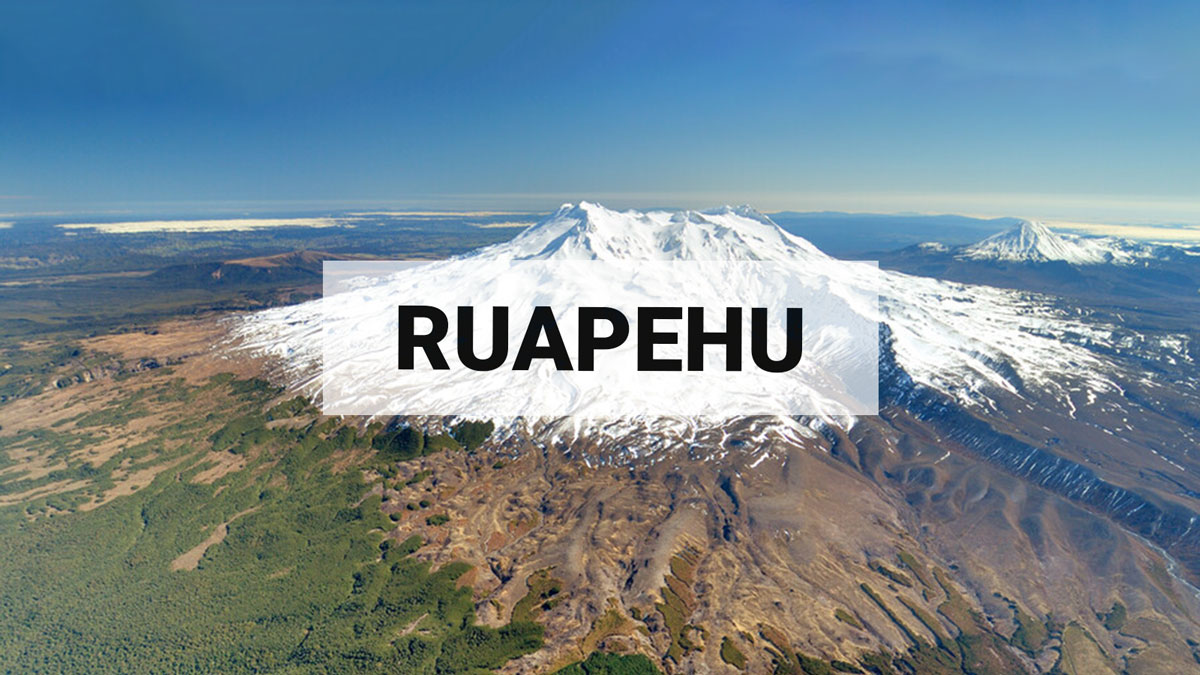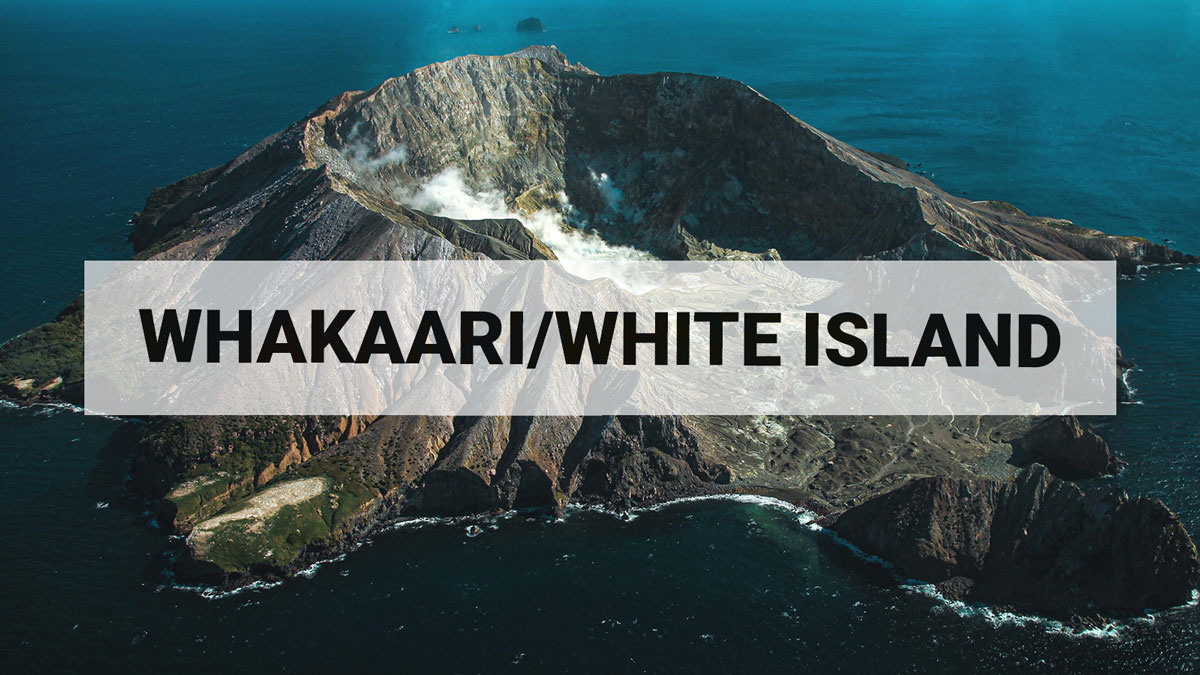Volcanic Activity Bulletins
Volcano Activity Bulletins (VABs) are New Zealand's official source of volcano status information including the current Volcanic Alert Level (VAL).
They are issued on an as needed basis summarising the volcano status and recent events.
They can indicate if activity is increasing, decreasing, or in a steady state. They may contain forecasts, highlight developing, or expected problems.
If you’d like to be notified as soon as we issue a new bulletin, our social media channels and the GeoNet app will keep you up-to-date.
Unusual style of earthquake activity continues at Mt Ruapehu, no changes in overall volcanic activity. The Volcanic Alert Level remains at 1.
Although the unusual earthquakes have continued under Mt Ruapehu, our other monitored parameters have not changed. We continue to measure low-moderate volcanic gas emissions, a slow decline in lake temperature and water level. The last gas flight, Crater Lake water and gas analysis, and visual observations show no changes. A sudden eruption at Mt Ruapehu remains very unlikely. The Volcanic Alert Level remains at 1 and the Aviation Colour Code at Green.
Whakaari/White Island continues to emit low levels of volcanic gas and steam accompanied by hydrothermal activity. The Volcanic Alert Level remains at Level 2.
Recent flights over Whakaari/White Island to measure gas emissions and observe surface activity showed continued hydrothermal activity, including minor geysering. Low to moderate gas and steam emissions continue. There is no evidence of any volcanic eruptions, and the overall activity remains low. The Volcanic Alert Level remains at level 2.
Uncommon style of earthquake activity at Mt Ruapehu. Volcanic activity remains low, and the Volcanic Alert Level remains at 1.
In addition to a recent drop in lake temperature, in recent weeks Ruapehu has experienced some minor earthquake activity. Although the nature of the earthquakes is quite uncommon for Ruapehu, our analyses since our last bulletin do not raise any concerns. Other monitored parameters have not changed since last week’s bulletin, and volcanic activity remains low. The Volcanic Alert Level remains at 1 and the Aviation Colour Code at Green.
Te Wai ā-moe (Crater Lake) heating episode is over at Mt Ruapehu. Volcanic activity remains low, and the Volcanic Alert Level remains at 1.
Te Wai ā-moe (Ruapehu Crater Lake) has started to cool again, marking the end of the heating episode that started mid-October 2023. Temperature is currently 24 °C, down from its peak at 31 ºC on 14 February 2024. Other volcanic monitoring indicators remain within normal ranges and Volcanic activity remains low overall. The Volcanic Alert Level remains at 1 and the Aviation Colour Code at Green.
Minor geysering, low level steam and gas emissions continue at Whakaari/White Island. The Volcanic Alert Level remains at Level 2.
Recent gas and observation flights over Whakaari/White Island confirm the level of activity remains low. The primary surface activity is steam and gas emissions from the active vents with minor geysering in two craters. There is no evidence of any eruptive activity. The Volcanic Alert Level remains at 2.
Te Wai ā-moe (Crater Lake) enters new heating episode at Mt Ruapehu. Volcanic activity remains low, and the Volcanic Alert Level remains at Level 1.
Te Wai ā-moe (Ruapehu Crater Lake) has entered a new heating episode, currently being 29 °C. Other volcanic monitoring indicators remain within normal ranges. Volcanic activity remains low. The Volcanic Alert Level remains at Level 1 and the Aviation Colour Code at Green.
Low level steam and gas emissions continue at Whakaari/White Island. Lake level decreases. The Volcanic Alert Level remains at Level 2
Gas and observation flights over the past two months confirm the level of activity at Whakaari/White Island remains low. The primary surface activity is still mostly minor steam and gas emissions from the active vents. No eruptive activity was observed in the past few months, and beside some drop in water level in the crater lake, the active crater has not changed significantly. The Volcanic Alert Level remains at 2.
Earthquake activity recorded beneath Mt Ruapehu. Te Wai ā-moe (Crater Lake) slowly heating. Volcanic activity remains low, and the Volcanic Alert Level remains at Level 1.
The earthquake monitoring system at Mt Ruapehu has recently recorded a sequence of small earthquakes at 3-6 km depth clustered under the volcano. Te Wai ā-moe (Ruapehu Crater Lake) is slowly heating, currently reaching 19 °C. Other volcanic monitoring indicators remain within normal ranges. Volcanic activity remains low. The Volcanic Alert Level remains at Level 1 and the Aviation Colour Code at Green.
Mt Ruapehu’s Te Wai ā-moe (Crater Lake) is now cooling. Volcanic activity remains low, and the Volcanic Alert Level remains at Level 1.
After a short heating phase starting mid-July this year, Te Wai ā-moe (Ruapehu Crater Lake) has now cooled back down. Other monitoring indicators are within normal ranges for Mt Ruapehu. Volcanic activity remains low. The Volcanic Alert Level remains at Level 1 and the Aviation Colour Code at Green.
Low level steam and gas emissions continue at Whakaari/White Island. The Volcanic Alert Level remains at Level 2.
Based on gas and observation flights over the last few months, we conclude activity at Whakaari/White Island remains limited to minor steam and gas emissions. No eruptive activity was detected over the past few months, and changes in the active crater area have been minimal. The Volcanic Alert Level remains at 2.


